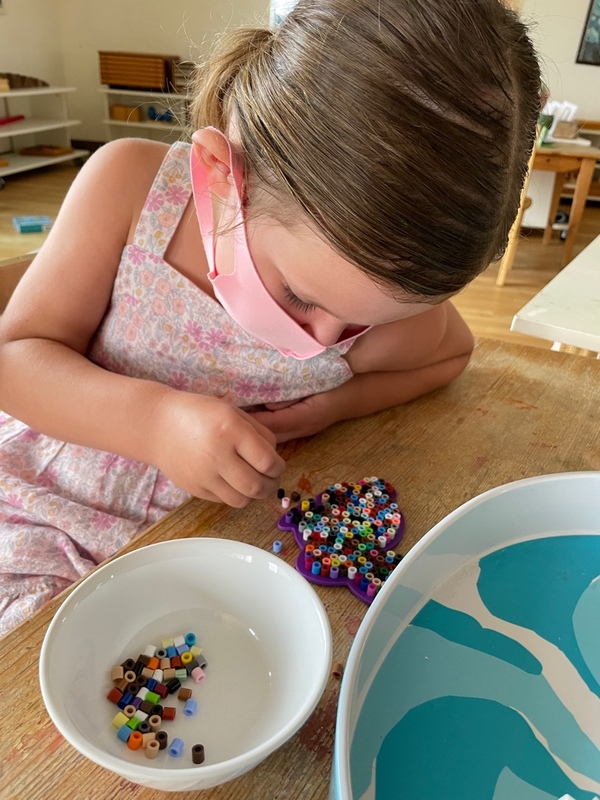(858) 759-0631
"If a child's cycle of activity is interrupted, the results are a deviation of behavior, aimlessness, and loss of interest...So whatever intelligent activity we witness in a child - even if it seems absurd to us...we must not interfere; for the child must be able to finish the cycle of activity on which his heart is set."
-Maria Montessori, The Absorbent Mind
Learning, by itself, cannot happen without concentration. Whether we are learning to tie our shoes, write our name, wash a car or solve complex algebraic equations, there is intense concentration specific to the task at hand. Dr. Maria Montessori understood the power of concentration, and her methodology is designed to nurture this power. In this, the first of a two-part article, we explore the importance of concentration in early childhood.
Nurturing Concentration in the Montessori Child in the First 6 years:
Montessori observed that the formative stage of concentration occurs from birth to about the age of three. I once had the pleasure of watching a two-year-old student discover a sticker. As she tried to pull it off the fingers of one hand, it stuck to the fingers of the other. As she alternated between hands, her inquisitiveness and delight were apparent. I did not rush to take it away from her, though I was watchful, fearing she might put it in her mouth. Rather, I sat nearby waiting until the adhesive strength lessened, thus ending her concentration. She spent around 5-10 minutes in intense concentration on this new sensorial experience.
Concentration in toddlers is a fragile thing. Well-meaning adults often rush in to "fix" things. A whimper suddenly demands that new toys be offered, a frown means a change of scenery is required. Concentration is broken by the adult trying to shift the focus of the child. Indeed, Maria Montessori said, "no one acting from the outside can cause him to concentrate". -Maria Montessori, The Absorbent Mind, page 222
As the child grows and enters the Montessori Primary Program, concentration and attention span increase. That is an indirect aim of most Montessori Primary activities. Practical Life activities are the cornerstone of the Primary curriculum which serves the purpose of building independence, improving coordination, and following steps in a sequence. All these build on focus and concentration, with some activities requiring fifteen minutes or more to complete.
In the Montessori classroom and at home, there is a deep respect for the child. In the Montessori environment, a child is rarely interrupted while he is focused on his work. Understandably, there will be times when a child must be interrupted. However, at these times, it is ideal to let the child know ahead of time, for example: "It's almost lunchtime. We will need to stop working on the puzzle and clean up in 5 minutes." In five minutes, time, offer a choice: "Would you like me to help you clean up or would you like to do it yourself?" Or, offer an alternative: "I know you are having fun working on the puzzle. After lunch, we can come back and work on it some more."
Our modern culture contains a multitude of distractions: video games, computers, television, and any number of sports or arts-related extra activities. Combined, these can create an overabundance of sensory stimulation.
Maintaining a calm, controlled, prepared Montessori environment and a clear approach to reducing distractions and sensory overload is an important task for Montessori teachers. This directed approach is designed to foster the power of concentration in children, so that they may grow to become happy, independent, and fulfilled adults!
-Ms. Cristina, Beetle Teacher

